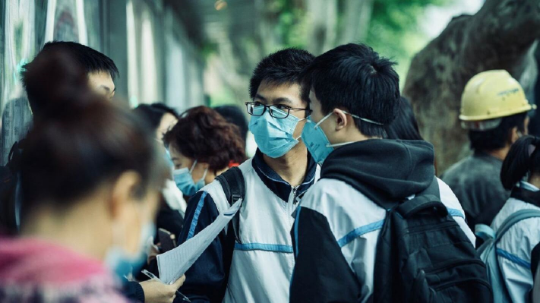A New Legacy of Inequality Behind COVID-19
Van Nguyen | 07 June 2021
Not far from downtown Bangkok is the district with the largest number of COVID-19 infections in the latest wave of the pandemic. In April, slum dwellers accounted for two thirds of all infections, twice as much as those living in condominiums and dormitories. This illustrates, once again, that when a pandemic meets inequality, less privileged communities are more likely to be on the losing end than others.
As a result of the widespread economic disruptions caused by the pandemic, about 89 million people are estimated to slide back into poverty in Asia and the Pacific, dropping below the international poverty line. About 140 million jobs were lost in 2020; many by people already living one paycheck away from penury. Neither the stock market nor the top 1,000 billionaires follow the same trajectory. On the contrary, despite a short-lived disruption early in the pandemic, billionaires worldwide saw their wealth increase by US$3.8 trillion between March and December 2020. Income inequality tends to increase in the five years following adversary shocks.
However, the consequences are not simply limited to widening the income gap between the rich and the poor. By simultaneously erasing most opportunities for the less privileged to build a better life, the pandemic risks deepening and perpetrating inequality from one generation to another. Here are a few reasons why.
In the absence of adequate social protection systems, short-term coping strategies of low-income households, such as reducing food intake and quality, may turn into a poverty trap. A WHO survey in Cambodia in 2020, for example, showed that meat, eggs, and fish products gradually disappeared from daily meals. Some 50 per cent of the surveyed women’s diets were reduced to a bare minimum by the end of the year. And for a region that was already grappling with malnutrition pre COVID-19, the outcome of nutritional deprivation among children and mothers is dire. With 31.5 million children under five wasted (low weight for height) by 2019 and 6.7 million more in 2020 as a result of COVID-19, an estimate by FAO, UNICEF, WFP and WHO, the opportunities to live up to one’s potential may be harder to come by for many children.
The disruptions to schooling render the prospects of education - families’ investment in a better future - uncertain. For the half of the region without access to internet, remote schooling is not an option. The loss of household income has made children’s education unaffordable. For every fifth girl reported having increased domestic responsibilities, education has become a luxury. As 6.7 million students are likely to drop out of school by the end of 2020, the risk of inter-generational poverty looms on the horizon.
While COVID-induced job loss is widespread, the pathway to long-term recovery is not equal for all workers. For low-wage workers who did not have teleworking as an option or social protection to fall back on, turning to low quality and informal work may be the only options left to make ends meet. Laid off workers turned delivery drivers. Shutdown restaurant staff turned street vendors. Domestic workers accepted a pay cut to stay afloat. An analysis of the labour market in South Asia by the World Bank suggested an exodus from the formal to the informal sector six months into the pandemic even when unemployment abated. And with no opportunities for workforce retraining and upskilling, it may not be unemployment that defines the post-COVID 19 labour outlook but employment that is lower-quality and more informal than it already is.
Past experience with shocks suggests that the pandemic could result in permanent loss to human capital and productivity. But it does not mean that the spell of inequality cannot be broken.
Direct cash transfer programmes have helped alleviate hunger during the pandemic. But these will need to be translated into adequate investments in efficient food systems and reliable health services, particularly for maternal and child diets.
The unprecedentedly swift transition to remote learning via radio, television and the internet has kept education viable. But for children who are out of reach or already dropping out, it will not be enough unless there is dedicated support for returning to school.
To break the trap of low-quality informal employment, there is no alternative to formalizing the informal sector and investing in adequate social protection systems. And just as the pandemic turbo charged technological-driven shifts in the world of work, ensuring opportunities for skills development and vocational training is needed more than ever to help low-wage workers get onto better trajectories.
What has been clear in the past year is how fast and decisively governments have responded to the crisis. But beyond 2020, there is a generation of children growing up in the pandemic and a cohort of youth entering the workforce in a time of recession. The recovery is unlikely to be just a sprint, but rather a marathon where a long-term strategy that invests in people is needed.
Van Nguyen, Sustainable Development Officer, United Nations ESCAP.
This article was originally published on United Nations ESCAP.
Views in this article are author’s own and do not necessarily reflect CGS policy.
